A note about my restaurant reviews: New York City counts many Eastern European restaurants scattered across the five boroughs, most of them ignored by restaurant critics and diners alike. I intend to visit as many as I can and report!
At first glance, Sammy’s Roumanian Steakhouse, situated in a basement on the Lower East side, doesn’t seem very Romanian. The dining room doesn’t look like much, with its bright lights, drop ceiling, and walls covered with faded pictures. The staff speaks unaccented English, and I wouldn’t venture trying alo, multumesc, or la revedere on them. And once you take in the menu, the live music, and the bottles of schmaltz on the table, it doesn’t take long to realize this is really a Jewish restaurant. In fact, some, like food writer Michael Gebert, have gone as far as to suggest that the whole Romanian thing is just an old ploy to avoid discrimination: “like ‘Dutch’ in vaudeville, ‘Roumanian’ in the restaurant biz was transparent code for ‘Jewish’.”
But not so fast. Other sources claim that the owner of Sammy’s, Stan Zimmerman, is indeed Romanian, or of Romanian descent. (Unless it was his predecessor, the actual Sammy — more on this below.) And if you look closely, you’ll see a picture of Romania’s former president Traian Băsescu on the wall. You’ll also compare the menu to those at places like Harmony Terrace, and you’ll find a lot in common: the pickled vegetables, the eggplant caviar (no longer on the menu at Sammy’s), the stuffed cabbage, the mixed grill, the carnaciori / karnatzlach sausages…
The truth most likely lies somewhere in between. Plainly, Jewish-Romanian immigrants opened restaurants in Jewish neighborhoods. These joints were at least as Jewish as they were Romanian, but decided that the “Romanian” handle sold more product than calling it “Jewish”. Over the years, while the Jewish traditions remained, the Romanian heritage was severely diluted and diminished, until the day came when none of the staff was from Romanian anymore — and most likely never set foot there.
Sammy’s opened in 1975. Legend has it that Stan Zimmerman won the restaurant off the original Sammy in a poker game. Zimmerman closed his Newark coffee shop and devoted his energy to his new acquisition, apparently more interested in drawing the celebrity and bohemian crowds than in catering to the neighborhood’s last remaining Eastern Europe-born Jews.
From there, we can retrace the story of Sammy’s through articles from the New York Times. In her 1976 review, Mimi Sheraton gives the place two stars, and calls the food “New York-Jewish-Rumanian”. She describes a crowd of “Gucci- and Vuitton-trimmed uptowners, devotees from Queens and New Jersey who pull up in white Cadillacs and black Continentals, blue-jeaned artists and bearded bohemian types, union officials, politicians, judges, out-of-time buyers with showroom models and theater personalities”. Our appreciation of the food may differ, but Sheraton mentions dishes that are nearly identical to what’s on today’s menu (except for a few that have been taken out). Her 1982 review finds “the food and service better than ever” and gives the place a third star (“Excellent”, by the NYT‘s scale from 0 to 4). You can see a picture of Stan Zimmerman in the dining room circa 1980 here, and you’ll even recognize some of the same dishes I’ll talk about later.
Fast forward to 1990. In this Molly O’Neill article, the food is mentioned less for its quality than for the size of the portions and the amount of schmaltz it uses. Mr. Zimmerman waxes lyrical about schmaltz (“when it’s cold, schmaltz is smooth and satiny… when it’s room temperature, it’s like melted butter”), shares a few anecdotes (about schmaltz, of course), and gives his very own recipe for schmaltz and gribenes. Fast forward again to 1998. The death of entertainer Ruby Levine, who’d made Sammy’s his home shortly after the restaurant opened, and “made his way from table to table, playing virtually every requested song, cracking jokes and leaving a trail of beaming faces in his wake”. By 2002, Ruby Levine’s been replaced by Dani Luv, and Stan Zimmerman has let his son Dave take over the running of the operation. Dave decides to dramatically remodel the place by purchasing “new chairs and steak knives”.
Finally, in 2014, a new NYT review of the restaurant comes out — 32 years after Mimi Sheraton’s last one. Whether it’s the food or the times that have changed, Sammy’s only gets one star (“good”), but Pete Wells calls it “the most wonderful terrible restaurant in New York”. If the food was once worth a trip to that shady neighborhood called the Lower East Side, people today come more for the atmosphere and the entertainment, provided by the infamous Dani Luv: comedian, singer, musician, actor, and more generally, Judaism’s answer to Frank Sinatra and Louis Armstrong rolled into one. A man who’s been cracking the same jokes every night for the past 6000+ nights (that’s over 16 years to you). Singing the same songs since the first time I stepped into that basement about 10 years ago, and probably much longer. In summer and winter alike, “Jingle bells, jingle bells, Jesus was a Jew”. A man who gets his very own NYT article.
If this isn’t enough history for you, check out this 2007 blog piece. Or pay a visit to the restaurant to admire the accolades from a bygone era (Distinguished Restaurant Award, 1991, from Condé Nast Traveler), look at the faded pictures of random patrons throughout the ages, and try to spot Food Perestroika’s business card.
Now it’s time to eat. Every time I go to Sammy’s, I order more or less the same thing. This recent visit was no exception, but I made an effort to try new dishes as well.
The menu design is memorable in itself, a yellow cardboard folder with a few sheets stapled onto it. The cover is an old xeroxed introduction by the owner, the words blurred after untold generations of copies. Inside, what looks like the author’s very first Word document lists half a dozen appetizers, a couple soups, one salad for the health-conscious who got dragged to Sammy’s by force, a collection of semi-classic steakhouse proteins (salmon, sole, chicken, veal, beef, and more beef), and half a dozen sides that lean heavily towards potatoes. Sadly, Mimi Sheraton’s eggplant caviar, baked unborn eggs, calf’s foot jelly, and brains with lemon juice are all gone. The portions are huge, so resist the temptation to order an app, a main, and a side per person. Unless you really love leftovers.
Let’s get the drinks out of the way first. There’s wine, though I don’t think I’ve ever seen any on a table. When you read on the menu “Wine — Glass $9.95, Bottle $44.95”, without any indication of the kind of wine, you might want to skip. Apparently somewhere in the back room there’s something that passes for a full bar, since the menu also mentions “Bar Drinks”. But the de rigueur drink, apart from seltzer, is vodka. Frozen bottles of Ketel One arrive set in blocks of ice, and if you’re too chicken for a whole bottle you can order a shot in a frozen glass, a generous pour that most places would call a double. Vodka and schmaltz, the two liquids of choice at Sammy’s. Try taking a shot of each in turns!
Mimi Sheraton claimed that the “appetizers are so maddeningly delicious, it’s hard to desist and save room for the rest”. First up is the chopped liver, Sammy’s style. It consists of four ingredients: chicken liver, grated radish (of the daikon variety, not the little pink ones), gribenes (a mix of fried onion and crispy chicken skin that’s ostensibly a byproduct of the rendering of schmaltz), and a liberal amount of schmaltz (plus some salt and pepper). It’s mixed table-side, though not with quite the kind of ceremony you’ll find at restaurants like Betony. Regardless, the result is excellent, even if you don’t like liver much, or you wonder what the hell daikon’s doing in there. Spread it on a slice of rye bread.
At some point, a waiter usually brings out two bowls of pickled vegetables without prompting. The large pickled cucumbers are well done but not my thing, though I reckon that their bright green color is attractive.
The pickled green bell peppers are first charred, then marinated in vinegar and garlic. The result is quite nice.
Then there’s the kishka. Mimi Sheraton called it “the only really good stuffed derma (kishka) I’ve ever had in a restaurant”. Forty years later, I call it borderline inedible. I had no clue what it was until I read the description on Wikipedia. It looks and tastes like a broiled slice of some huge starchy tuber. Apparently it’s a cow intestine stuffed with flour or matzo meal, schmaltz, and spices. A mix of pure starch and fat in a sausage casing, what a strange idea… It’s very dense, very plain. Is it always that bad? If you must eat it, it goes tolerably well with the chopped liver.
The mushroom-barley soup equally fails a comparison with the “smoky, earthy mushroom and barley combination” of 1982. 2015’s rendition might remind you of something you had at your Jewish grandmother’s house as a child (including the bowl), if the triggered memory is of a bland and undersalted soup. There’s a kreplach (meat dumpling) hidden in there, its thick, soft dough wrapping a veal meatball that’s a bit compact but has a pleasant meat taste, even though the seasoning is minimal.
In the main courses, Sammy’s specializes in pieces of meat larger than the plates they’re served on. They do call themselves a steakhouse, after all. The Jewish veal cutlet remains close to Mimi Sheraton’s description: “superb veal rib chops thickly and crisply breaded”. It resembles a veal schnitzel on the bone, and for good reason — it’s a whole veal chop, pounded, breaded, and fried. I like the idea, and the meat’s tender and tasty, if a bit overcooked. Too bad it doesn’t come with garnishes.
The mixed grill for 2 (or, more realistically, 3) lets you sample three of the grilled meats at once: the Romanian tenderloin, the baby lamb chops, and either the broiled sweetbreads or the karnatzlach (meat and garlic sausages).
The Romanian tenderloin is really a skirt steak, an amusing euphemism for a cut that is notoriously very flavorful but not all that tender. Ours came rare, as ordered, but I hear that the kitchen sometimes pays little attention to the doneness that you request. Maybe we just got lucky. Regardless, you get both quantity and quality, an excellent whole skirt steak. Sometimes, the steak comes covered with garlic — that’s supposedly what makes it Romanian — so if that’s not your thing, tell your waiter and hope the kitchen will listen. The lamb chops are also excellent, with just the right lamb flavor, and also served rare as requested. I’m not sure why they’re called “baby” lamb chops when they rank among the largest lamb chops I’ve ever seen! The sweetbreads, once described as “usually tough and much like vinyl”, are cooked properly now, and taste quite good. Sweetbreads are one of those proteins that tend to acquire the flavor of whatever they’re cooked with, so of course, when you cook them plain they’re only moderately flavorful, but at least the texture’s fine. I did try the karnatzlach once, a few years ago, and have stayed away from them ever since. Even if you really like garlic (and you have to), I don’t remember them being worth it. But all in all, the mixed grill’s a great way to taste a few of the things that Sammy’s is famous for and good at.
There’s no better side with that than the silver dollar home fried potatoes, which look like thick-cut chips. The potatoes are crispy outside but still tender inside, as they should be.
That’s more than I can say about potato latkes. Pete Wells describes them as “flavorless and textureless, but not weightless”, which is a bit harsh but quite right. They’re dense, they don’t contain onions, and the apple sauce only helps a bit. Come on, seriously, what kind of Eastern European / Jewish restaurant makes bad potato latkes?!
As in most steakhouses, there are a couple of seafood options featuring some of the “meatier” fish. The sole, available broiled or fried, is every bit as large as the cuts of meat. I do have some serious doubts that the fish under the breading is really sole, however. The texture just doesn’t seem right — I would say it’s cod because it’s very flaky. Also, if it was real sole, it would have to cost twice as much… This debate aside, it tastes pretty good (but not like sole).
The menu lists only one dessert — rugelach. It’s sometimes offered on the house. This is the chocolate-cinnamon variety, which I definitely prefer over the fruit kind, but the texture’s funny. It’s very soft and chewy, not like any rugelach I’ve ever had, and not for the better. I can see how a soft filling could be pleasant, but this is just too much. The appearance is quite puzzling too: they don’t look like rolls at all, which is an etymological heresy. I’d almost say this is a completely failed batch that the waiters tore by hand to make look vaguely like the real deal! Especially since I seem to remember from previous visits that they sometimes tasted better (unless that was some kind of vodka-induced delusion).
In 1982, service was “remarkably efficient and good natured”. On my own visits, it’s been more like standard, occasionally abrupt, and/or old-school New York grumpy, which is just fine by me.
There are a few iconic dishes at Sammy’s that make the food worthwhile, especially the chopped liver and the Romanian tenderloin that’s not really Romanian and not really a tenderloin. In addition to the dishes I’m reviewing here, the stuffed cabbage and the DIY egg creams are often mentioned, as well. Give them a try and tell me what you think! The rest can be so-so. I don’t think I’ll ever eat kishka anywhere ever again. And I still wanna know what exactly happened to my rugelach.
So between your shots of Ketel One, while listening to Dani Luv’s jokes, don’t forget Food Perestroika’s recommendations when it’s time to place your order. In a city where many restaurants don’t survive long enough to blow out their first birthday candle, Sammy’s offers the debatable benefit that my review might still be perfectly up to date 10 years from now.
Cuisine: Jewish / Romanian
Picks: chopped liver Sammy’s style, mix grill
Avoid: kishka, mushroom-barley soup
Food: 6.5/10


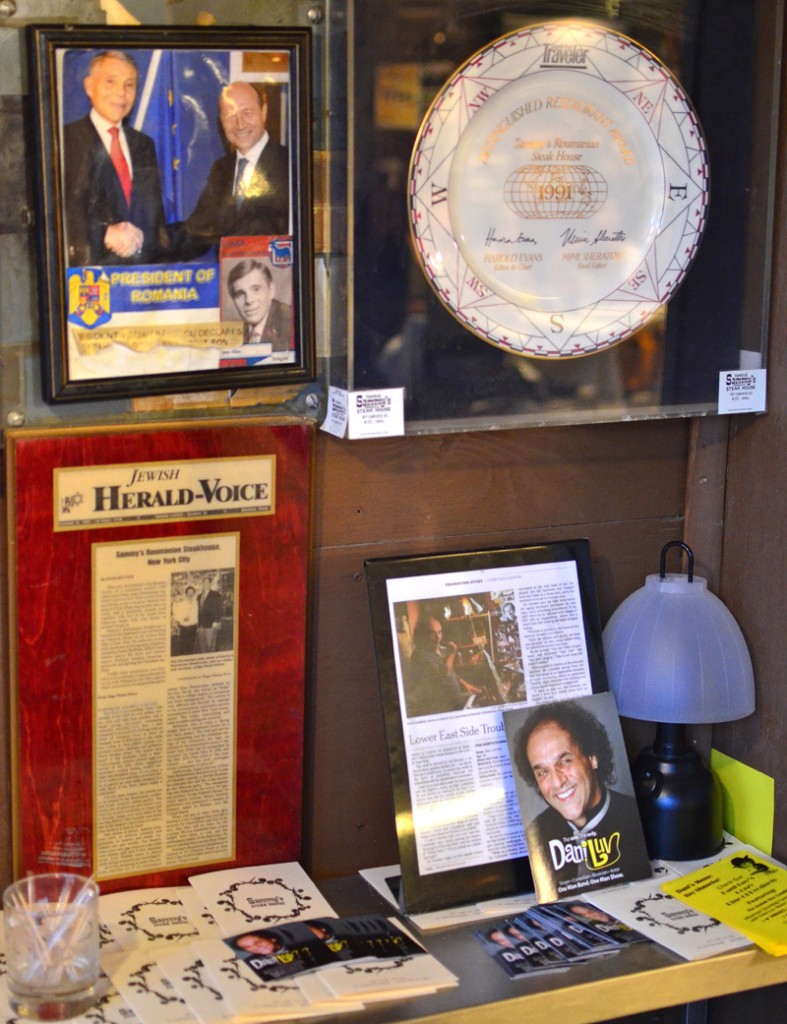
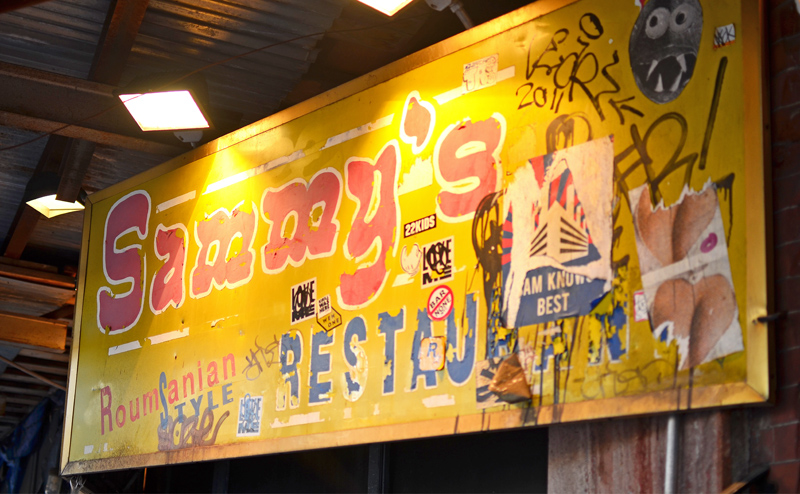
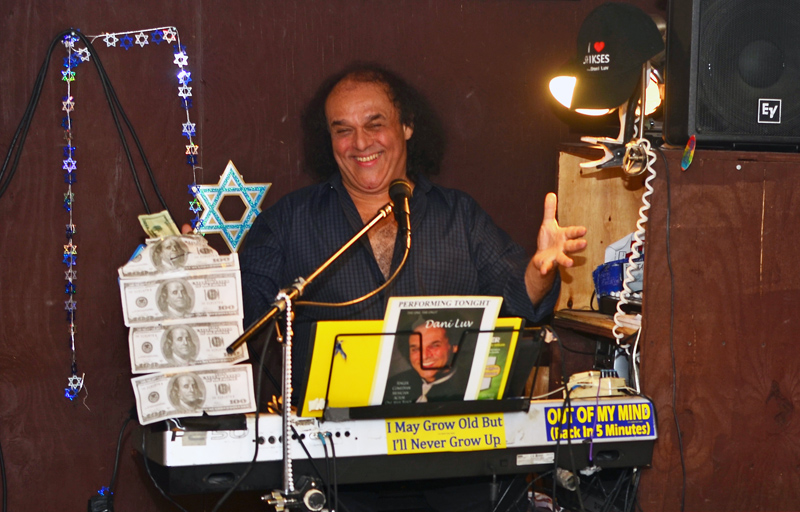
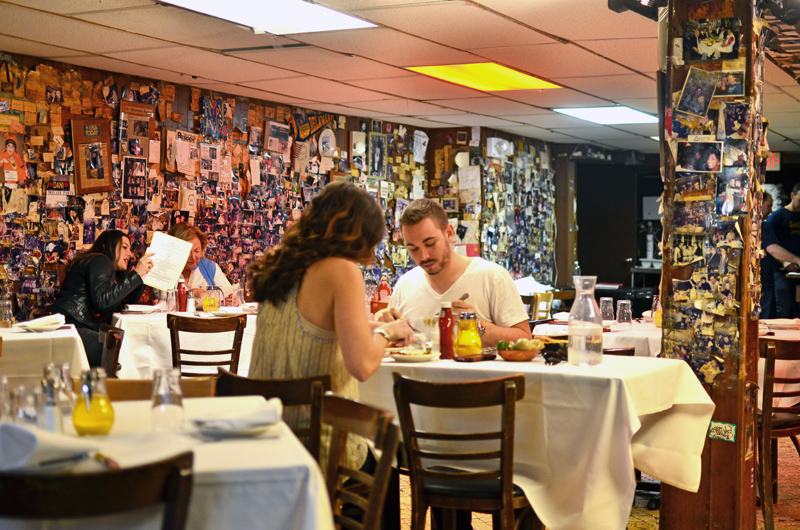
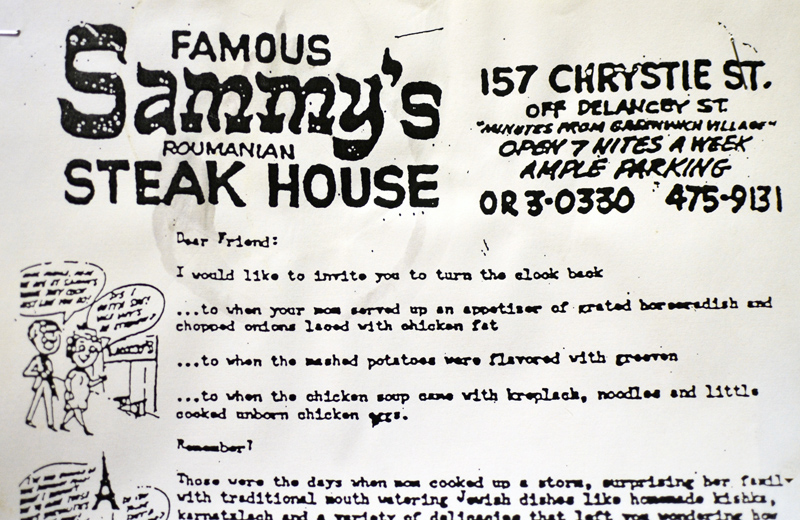
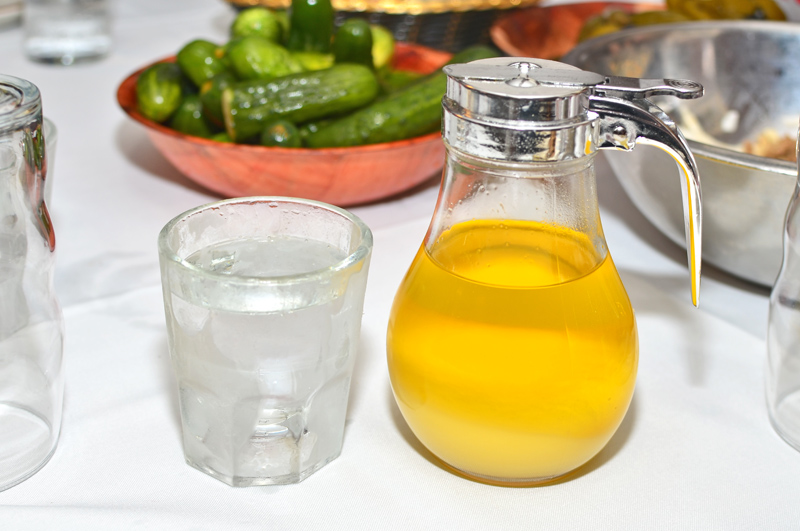

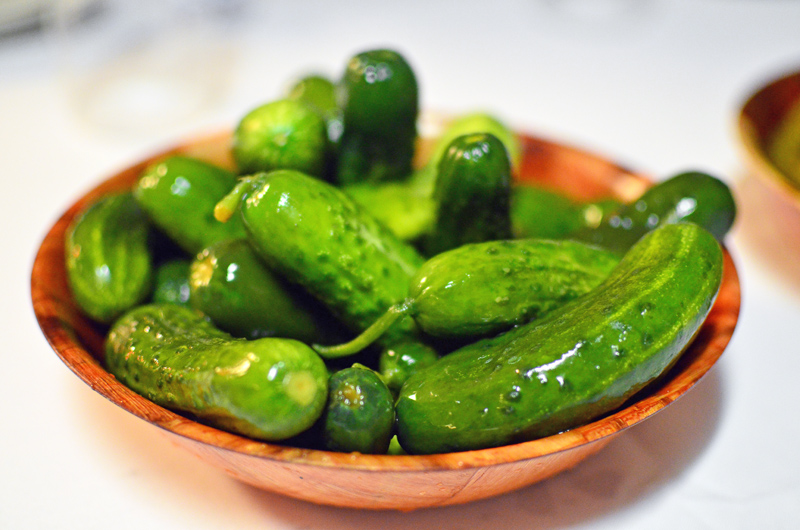
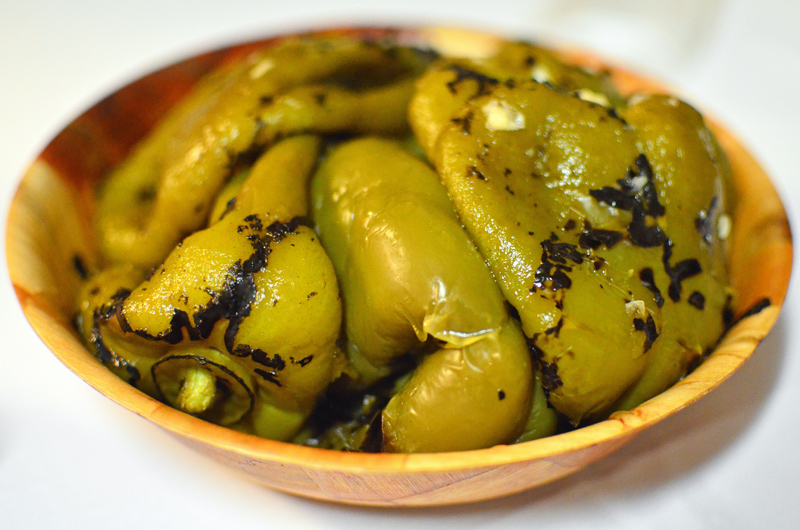
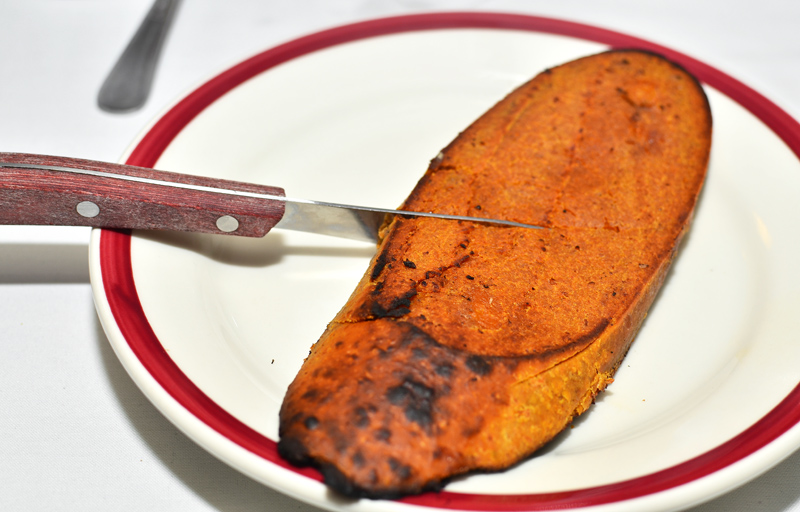
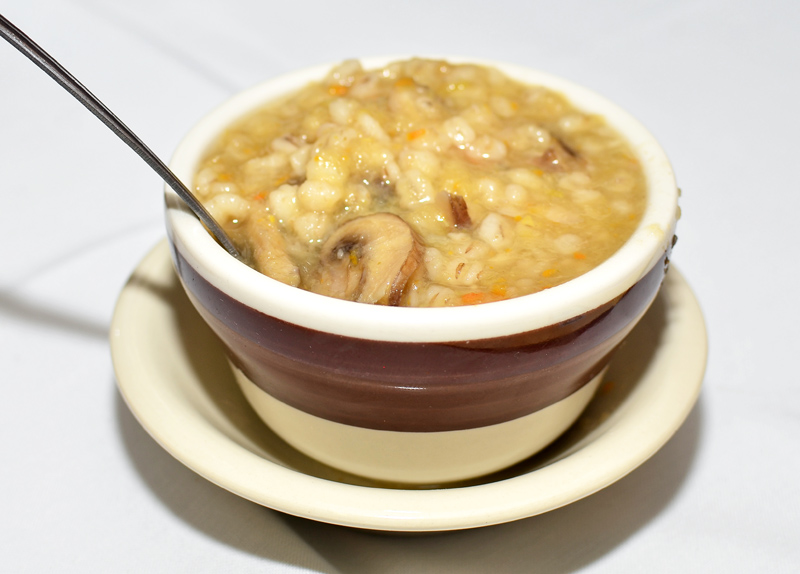


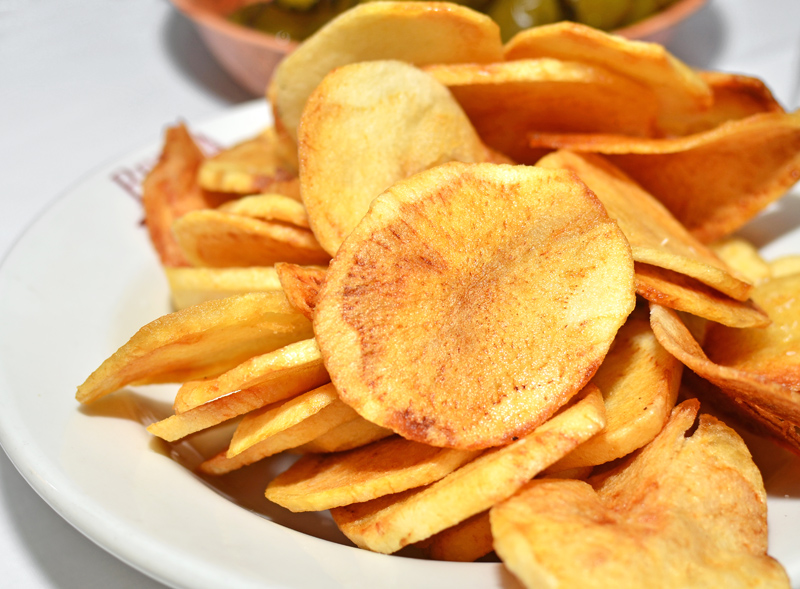
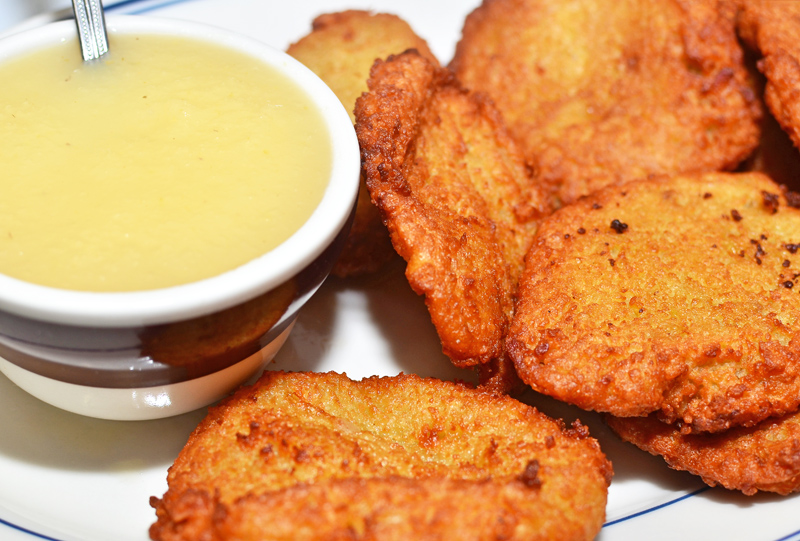

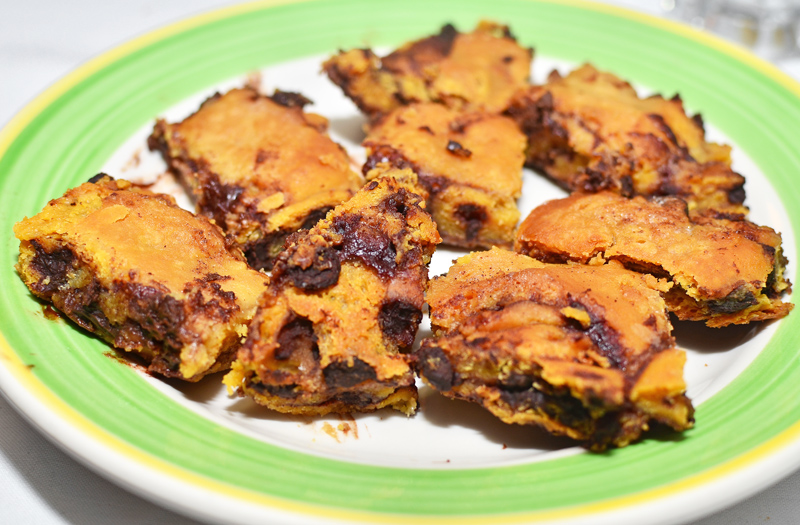

1 comment
Atmosphere is great food even better will be back